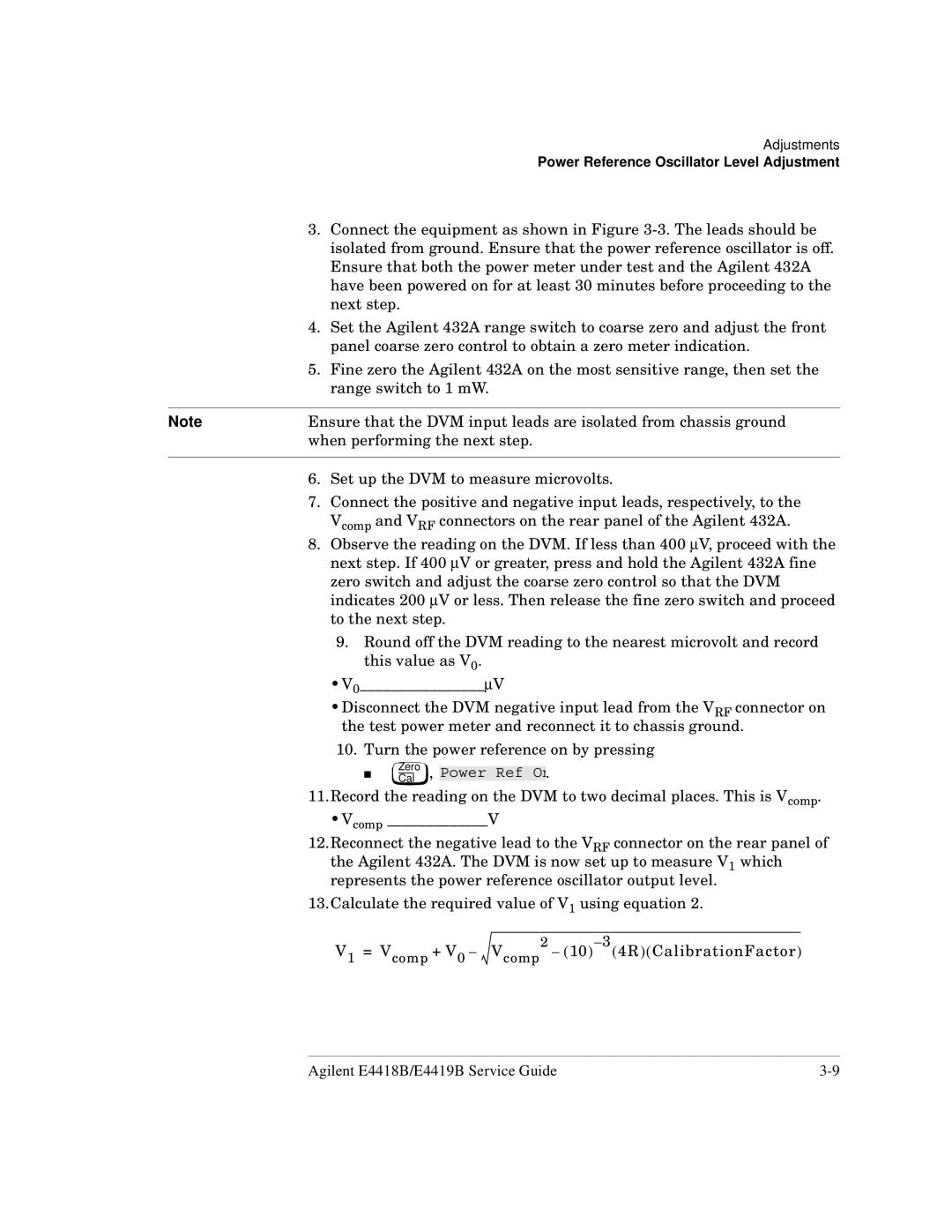
|
| Adjustments |
|
| Power Reference Oscillator Level Adjustment |
| 3. | Connect the equipment as shown in Figure |
|
| isolated from ground. Ensure that the power reference oscillator is off. |
|
| Ensure that both the power meter under test and the Agilent 432A |
|
| have been powered on for at least 30 minutes before proceeding to the |
|
| next step. |
| 4. | Set the Agilent 432A range switch to coarse zero and adjust the front |
|
| panel coarse zero control to obtain a zero meter indication. |
| 5. | Fine zero the Agilent 432A on the most sensitive range, then set the |
|
| range switch to 1 mW. |
|
| |
Note | Ensure that the DVM input leads are isolated from chassis ground | |
| when performing the next step. | |
|
|
|
6.Set up the DVM to measure microvolts.
7.Connect the positive and negative input leads, respectively, to the Vcomp and VRF connectors on the rear panel of the Agilent 432A.
8.Observe the reading on the DVM. If less than 400 ∝V, proceed with the next step. If 400 ∝V or greater, press and hold the Agilent 432A fine
zero switch and adjust the coarse zero control so that the DVM indicates 200 ∝V or less. Then release the fine zero switch and proceed to the next step.
9.Round off the DVM reading to the nearest microvolt and record this value as V0.
•V0________________∝V
•Disconnect the DVM negative input lead from the VRF connector on the test power meter and reconnect it to chassis ground.
10. Turn the power reference on by pressing
Zero
■ Cal
,
Power Ref On.
11.Record the reading on the DVM to two decimal places. This is Vcomp. •Vcomp _____________V
12.Reconnect the negative lead to the VRF connector on the rear panel of the Agilent 432A. The DVM is now set up to measure V1 which represents the power reference oscillator output level.
13.Calculate the required value of V1 using equation 2.
V1 = Vcomp + V0 – ![]()
![]() Vcomp2 –
Vcomp2 –
Agilent E4418B/E4419B Service Guide |
